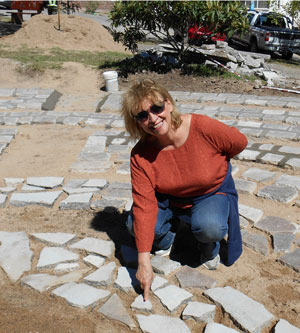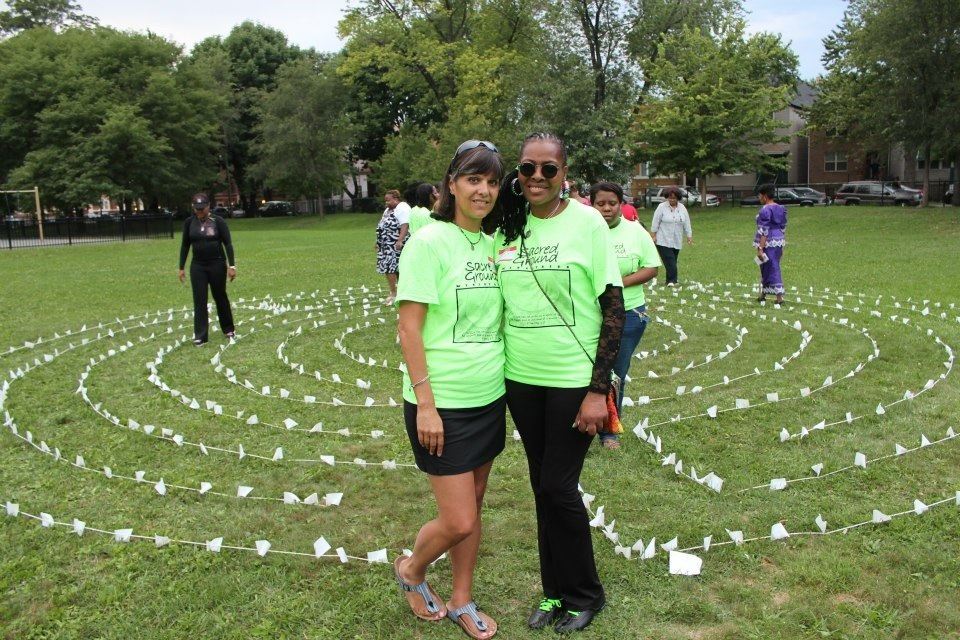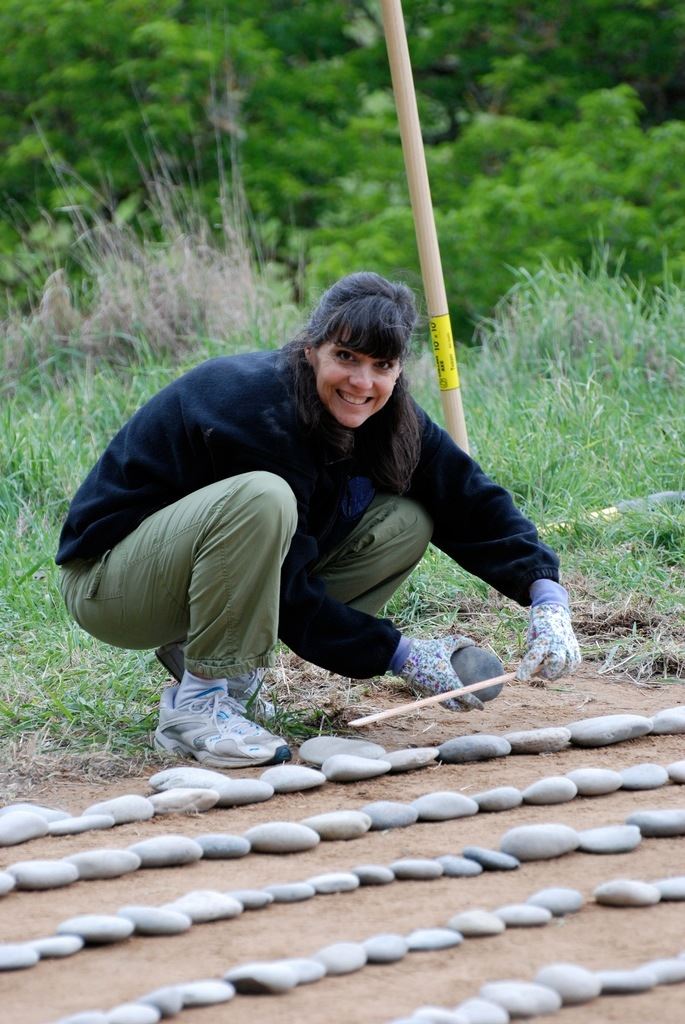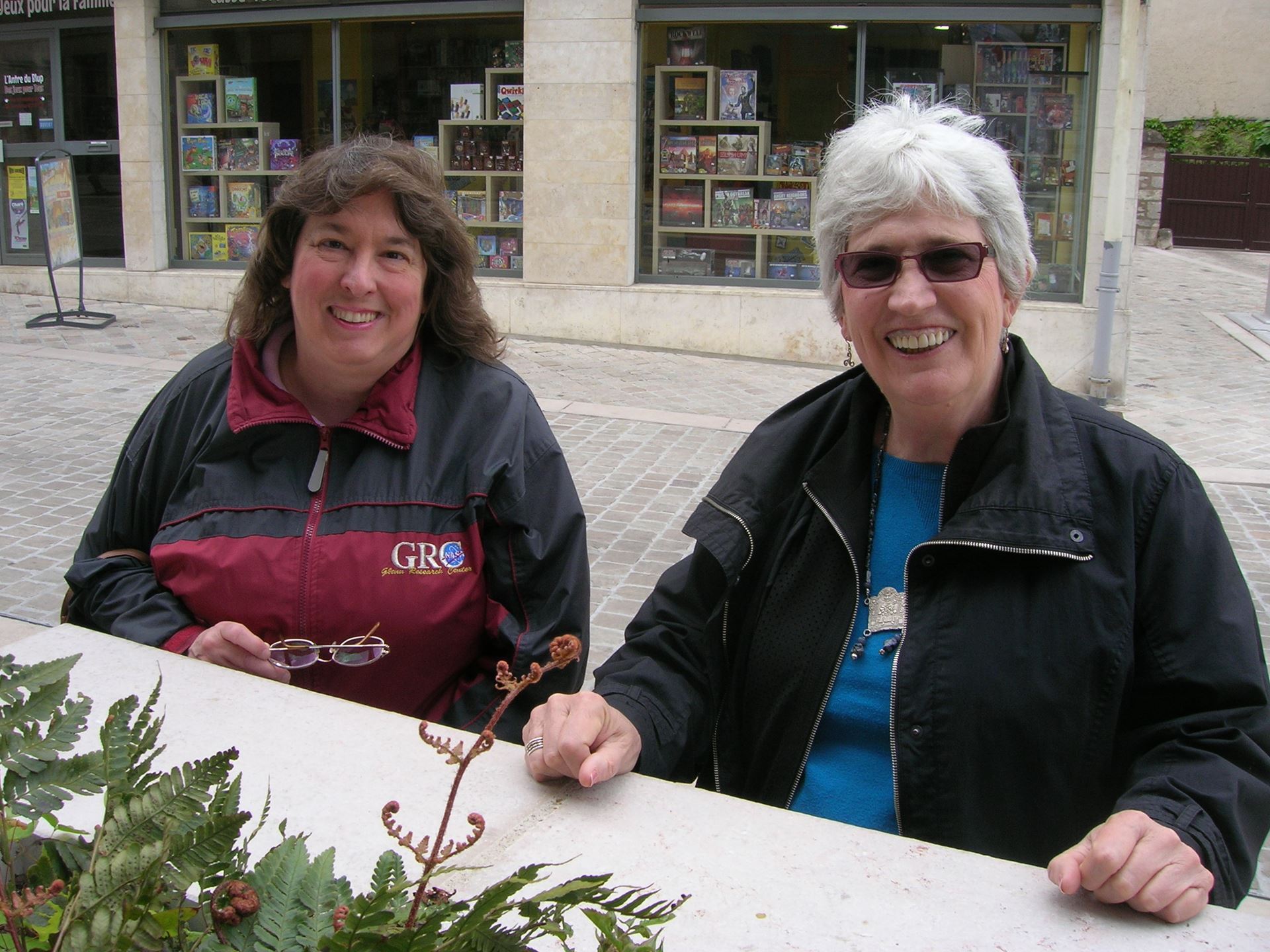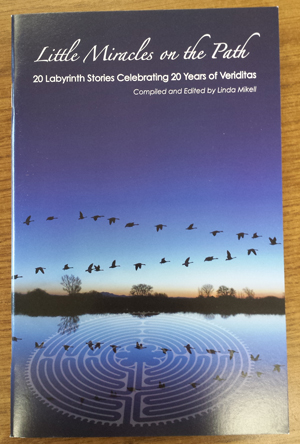
February 2016 |
Welcome to our new Board Member
Kathleen Pilus joined the Veriditas Board of Directors in January 2016
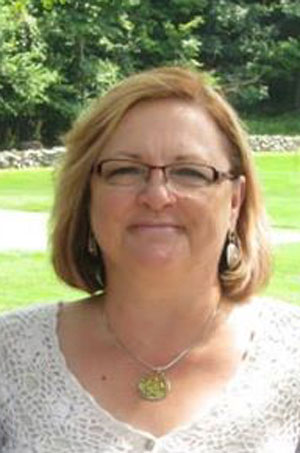 Kathleen comes to the Veriditas board with a diverse background and a great passion for labyrinth work. After discovering the labyrinth in 2009 on her first pilgrimage to Chartres, France, her life’s trajectory has changed dramatically. Kathleen was the Managing Partner and co-owner of Sign Language Resources (a firm that coordinates and provides sign language interpreting services throughout the US) for almost 25 years, before retiring in the fall of 2013. She is also a nationally certified Sign Language Interpreter, with more than 35 years of experience, and continues to work as an interpreter in private practice, concentrating her work in both the educational and medical settings. Kathleen is a Certified Veriditas Labyrinth Facilitator and has recently started a new business, “Mindful Journeys,” where she will be integrating labyrinth work to help families, both Hearing and Deaf, to fine-tune their lives in order that they may walk “a path of wisdom.” Kathleen is an Army Brat who spent the first 18 years of her life moving many times and experiencing all of that this amazing country has to offer. When she and her husband, Keith, married, they settled down in the Hudson Valley region of New York State and have lived there for 33 years. They are the parents to 4 grown sons, whom they lovingly call their “four only children,” and are “grandparents” to two sweet Rottweilers (Dilla and Tioga) who live with their oldest son and his wife.
Kathleen comes to the Veriditas board with a diverse background and a great passion for labyrinth work. After discovering the labyrinth in 2009 on her first pilgrimage to Chartres, France, her life’s trajectory has changed dramatically. Kathleen was the Managing Partner and co-owner of Sign Language Resources (a firm that coordinates and provides sign language interpreting services throughout the US) for almost 25 years, before retiring in the fall of 2013. She is also a nationally certified Sign Language Interpreter, with more than 35 years of experience, and continues to work as an interpreter in private practice, concentrating her work in both the educational and medical settings. Kathleen is a Certified Veriditas Labyrinth Facilitator and has recently started a new business, “Mindful Journeys,” where she will be integrating labyrinth work to help families, both Hearing and Deaf, to fine-tune their lives in order that they may walk “a path of wisdom.” Kathleen is an Army Brat who spent the first 18 years of her life moving many times and experiencing all of that this amazing country has to offer. When she and her husband, Keith, married, they settled down in the Hudson Valley region of New York State and have lived there for 33 years. They are the parents to 4 grown sons, whom they lovingly call their “four only children,” and are “grandparents” to two sweet Rottweilers (Dilla and Tioga) who live with their oldest son and his wife.One day I woke up and knew it was the day to send out the announcement of this program. Two weeks later on Tuesday, August 29th, Hurricane Katrina made landfall in New Orleans. It was the first implementation of our project. We learned two important things: One, it’s important not to involve people who are directly affected by the event, and, Two, the response doesn’t have to be immediately after the event. We learned the plan could be simple yet still profound. We would send out the informational flyer for a labyrinth event, and people could plug in specific information. In the beginning we responded event by event and provided materials and a prayer. Later Jo Ann Mast, another founding member of the Council, had the idea of laying a base of intention and then layering the events on top of that. We added the unifying prayer and created the Global Healing Resources Quarterly in 2007. A favorite part of my work with GHR is helping other facilitators get their feet underneath them. The GHR can help them feel that they have the necessary, creative resources easily accessible for intentional labyrinth walks. (globalhealingresponse.com) Do you have a vision of a new offering to the labyrinth community?Yes, I do, and I believe it is a direct extension of my work with GHR. I am now deeply exploring the concepts of Collective Consciousness; Collective Healing. John Haeglin, Phd. has written about this in an article entitled, ‘The Power of the Collective,” and Lauren and I offered a Webinar on the GHR and the Unified Field of Quantum Physics. This scientific experiment was based on the premise that a certain number of meditators in a specific area for a certain period of time could reduce the level of violence and crime through their collective energy. This was shown in Washington, DC in 1993 where violence was high. Crime was reduced 25%. In quantum physics, it was determined that the necessary number of meditators was equal to the square root of 1% of a population; this collective energy is enough to have a measurable effect. When I heard about this, I had a strong sense that the labyrinth community was in the perfect position to facilitate this impact. We have the international community of facilitators who could be instrumental with a unified energetic intention. In addition, the leaders at the Institute of Noetic Sciences (IONS), where Veriditas offices are located, are deeply involved in this effort. I believe this is more than coincidence. Science is proving the effectiveness of this concept. Peace leaders and peace visionaries are in place to work together. As Annie Kirkwood said, “Peace on earth lies only in the hearts of peaceful men, women and children.” Albert Einstein voiced it in another way, “We are all connected.” Can you share a profound experience in your work with the labyrinth?
The one that comes to mind was the first time I offered the labyrinth to the men in jail. My friend Sarah had helped me set it up on the very large gym floor. We would be there with 20 male inmates; there were no windows, but we had a call button if we needed assistance. I felt ready with my favorite music, and I certainly wanted it to go well. When we finally got inside, we discovered there was no electrical outlet. Therefore, no music. I didn’t know how it would go, and I didn’t think we would get much processing at the end. I was completely surprised when the men spoke about the incredible experiences and revelations they had had on the labyrinth. Some cried – tears came. One man said, “The silence. I was so grateful for the silence. We don’t ever get silence here.” I realized I had been so intensely afraid of the absence of music. I learned, once again, that we definitely have to trust the labyrinth. In follow-up to this story, I remember that the minister who brought me into this labyrinth work had bought the 39’ canvas labyrinth from Robert Ferre, and the women from our church had painted it. He said that if I could pay him $1800, the labyrinth would be mine. I immediately sold what I needed to sell on eBay and brought him 18 one-hundred-dollar bills. The labyrinth was mine! That experience also landed me the assignment of organizing the first Veriditas auction! What do you consider your biggest challenge these days?Time. I know we each only have our own personal bandwidth, and each of us is trying to deal with what we have on our plate. I know I don’t have to solve every problem, but I do have to do what I can. Please expand on the sense of the ebb and flow of the labyrinth in your life.I am aware that the labyrinth is playing a changing role in my life. In the past I have primarily offered it to others, keeping my head down and continuing to work. Now I am turning to it for my own needs and learning to be more present in the moment and feeling things that I’ve put off. I formerly used it as a gift to others; now I am receiving it as a gift. I am growing in this connection and feeling ready to handle my life. |
When did you first encounter the labyrinth?When I was young I always liked to read Greek Mythology so I began hearing about the labyrinth through that. Years later I saw an article in the newspaper about a labyrinth and it got my curiosity. In 1999, I started going to St. John’s Episcopal Church in Cuyahoga Falls, Ohio where they had an adult education hour and in one session they talked about the labyrinth there and about Lauren’s work. From there I began hearing more and more about the labyrinth and Lauren’s work.
In January of 2003 I walked my first labyrinth. It was a little over a month after my father died. The last six weeks of his life were very difficult for me because there were complications from surgery and he ended up being in a coma for almost a month. I needed to walk a labyrinth just to get hold of my grief. I walked the indoor labyrinth over at Ursuline College in Pepper Pike, Ohio. They had a day at that time when you could walk their indoor labyrinth so I went there to walk. It worked with my grief process by bringing order into chaos. It gave me a way to organize my thoughts and brought me some comfort. My father was on life support for about a month and it was so difficult going through that process. That labyrinth walk was a wonderful meditation tool, a way for me to have a heart to heart talk with God. I don’t necessarily find that this is an easy thing to do. Occasionally after that I started walking labyrinths here and there. I found walking the labyrinth to be much deeper than any prayer that I might offer to God. When did you begin to be drawn to Lauren and Veriditas?
After walking the labyrinth a few times I felt it was necessary to create a labyrinth that reflected my experience, so in 2006 I created the concept of a | butterfly labyrinth. This eventually became a finger labyrinth in the shape of a butterfly and was first carved in wood by Mike Welham, a retired co-worker of mine in 2009. I didn’t even know what I created. I didn’t understand about labyrinths, so I figured that I had better get educated about them. I would dream about labyrinths and I found out later how much this had been influenced by my grief around my father’s death and the work of Elisabeth Kubler-Ross and her Five Stages of Grief. A few years later I realized that I wanted to be better educated about the labyrinth and found Lauren again and Veriditas through the internet. As a result I went to Chartres in 2014 and 2015. I felt drawn to Chartres. When I went there it was amazing. In some ways it felt like home. Coming home to Mother, to Mary. It was so majestic and beautiful and awe inspiring. Lauren is such a great teacher in the way she presents the labyrinth, and Veriditas is very well run. You see her vision as to what she wants. Why do you donate to Veriditas?I donate to Veriditas because I can see Lauren’s vision. I think it’s important for people to have a heart to heart talk with God, with themselves and to pray. The walking meditation on the labyrinth is much easier for me and many others than sitting down to pray. I find it to be much more intimate. I think it’s important for people to be able to have an experience of closeness with God. I want the world to have more labyrinths and to be introduced to the labyrinth properly, as Lauren and facilitators who are trained by Veriditas do. |
|
|
|

